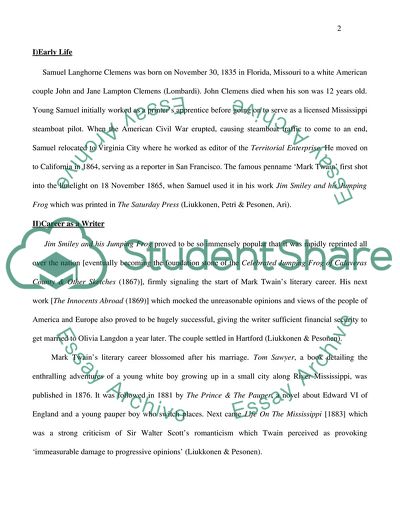Cite this document
(“Biography of Mark Twain Research Paper Example | Topics and Well Written Essays - 1500 words”, n.d.)
Retrieved from https://studentshare.org/literature/1574405-bibliography-of-a-writer-or-a-poet
Retrieved from https://studentshare.org/literature/1574405-bibliography-of-a-writer-or-a-poet
(Biography of Mark Twain Research Paper Example | Topics and Well Written Essays - 1500 Words)
https://studentshare.org/literature/1574405-bibliography-of-a-writer-or-a-poet.
https://studentshare.org/literature/1574405-bibliography-of-a-writer-or-a-poet.
“Biography of Mark Twain Research Paper Example | Topics and Well Written Essays - 1500 Words”, n.d. https://studentshare.org/literature/1574405-bibliography-of-a-writer-or-a-poet.


